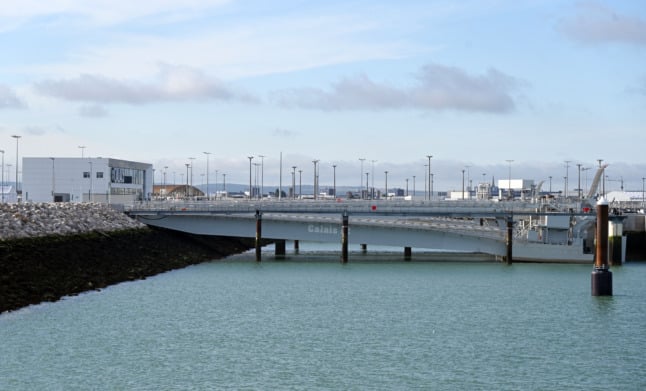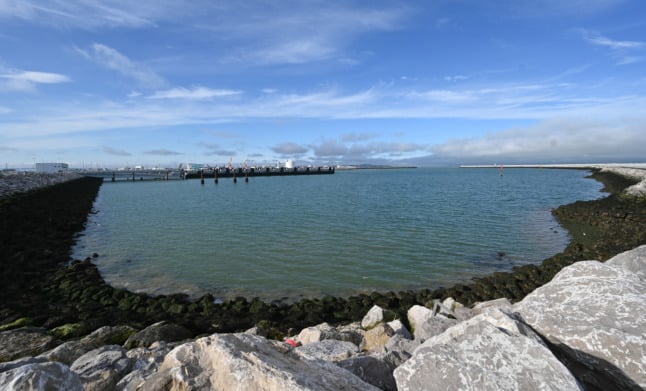Coming in at €863 million, the works represents the largest European maritime construction project of the 21st century (so far). Calais is already home to continental Europe’s largest passenger port, welcoming on average 10 million passengers every year, as well as an extensive freight operation.
Work began in 2015, and the project aims to bring about a 40 percent increase in cross-channel traffic by 2030. It benefited from €270 million of public funding, including €98.5 million in European subsidies.
The new port section will begin running on October 4th.
More passengers
The extension of the port will double the previous capacity, meaning more possibilities for visitors travelling from Dover. The project creates 90 hectares of additional docking area, including three new ferry berths which will be able to accommodate larger ferries of up to 240 metres in length.
According to France Bleu, the DFDS ferry company will soon be running 34 journeys to Dover every day, compared to 15 at the moment.
Irish Ferries became the third company to operate Dover-Calais ferries when it launched a new service on the route on June 29th, 2021, joining DFDS and P&O.
“This new ship from DFDS, ‘Côte d’Opale’, do you think it would be there if there wasn’t this new port?” president of the Hauts-de-France region and presidential hopeful Xavier Bertrand said in a speech during the inauguration of the project on Thursday.
“Do you think Irish Ferries would be here if it wasn’t for this new port and these new possibilities? Never in a million years.”
L’arrivée de nouvelles compagnies maritimes et l’ouverture de nouvelles routes n’auraient pas été possibles sans ce nouveau port. #CalaisPort2015 pic.twitter.com/8WUGwxe5Ba
— Xavier Bertrand (@xavierbertrand) September 9, 2021
READ ALSO Six reasons to visit Calais (apart from duty-free shopping)
Local authorities are hoping the renovated port will attract increasing numbers of British visitors, and that the benefit will be felt by Calais as a whole.
“British people should no longer simply pass through, but stop and spend their holiday in Calais,” the town’s mayor, Natacha Bouchart, told BFM on Thursday.
She said planning work had been undertaken to make it safer for people walking from the port to the beach, and visitors can also benefit from public transport, which was made free in Calais in January 2020.
Duty free
A key element in attracting visitors from England is the creation of a 1,000 square-metre duty free shop, also set to open in October.

Tax-free sales were abolished within the European Union in 1999, but as a consequence of Brexit, since January 1st British travellers have been allowed to buy “duty free” alcohol, cigarettes and other items at specialised shops in ports or airports, or onboard planes and ferries.
Customs limits
However, new UK customs rules mean ‘booze cruises’ could in fact become more difficult. If you want to avoid paying import duties in the UK, you’ll have to limit your duty-free purchases to the allowances in place since the beginning of the year.
For alcohol, you are allowed to bring back to the UK:
- 42 litres of beer
- 18 litres (24 standard bottles) of still wine
- 4 litres of spirits OR 9 litres (12 bottles) of sparkling wine, fortified wine or any alcoholic beverage less than 22% ABV
If you are purchasing tobacco, you cannot exceed:
- 200 cigarettes OR
- 100 cigarillos OR
- 50 cigars OR
- 250g tobacco OR
- 200 sticks of tobacco for heating
- or any proportional combination of the above
For everything else, you cannot bring back goods worth a total of more than £390, or you will have to pay tax and duty on everything.
The impact on freight
The port investment project is not just aimed at passengers, it is also designed to facilitate a growth in freight traffic. As well as being able to welcome larger ferries, the focus is also on the development of modal transfer, and being able to transfer more unaccompanied freight. In June, DFDS launched a new unaccompanied freight service between Calais and Sheerness in Kent.
Menna Rawlings, the British ambassador to France, attended the inauguration, tweeting that the new port “should improve fluidity for lorries and travellers”.
Enfin, j’ai assisté à la cérémonie d’inauguration pour le nouveau Port de Calais, qui doit améliorer la fluidité pour les camions et les voyageurs ➡️🇬🇧. C’était un plaisir de rencontrer Jean-Marc Puissesseau, sans lequel ce projet n’aurait pas été possible. #portdecalais pic.twitter.com/ezyPABI0NS
— Menna Rawlings (@MennaRawlings) September 9, 2021
Calais has recently suffered from customs delays and a fall in passenger numbers due first to Brexit and then the Covid pandemic. Passenger numbers fell by 61 percent in 2020, while freight traffic was down 8 percent.
In October 2018, Bouchart said Calais would need to invest around €20 million to create a new customs system for both the port and the Eurotunnel in response to Brexit. The port of Calais confirmed to The Local that Brexit preparations are independent of the €863 million port investment.



 Please whitelist us to continue reading.
Please whitelist us to continue reading.
Just don’t bring a packed lunch with you.